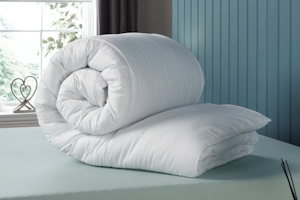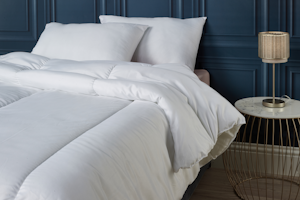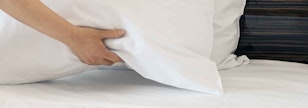20 Mar 2025
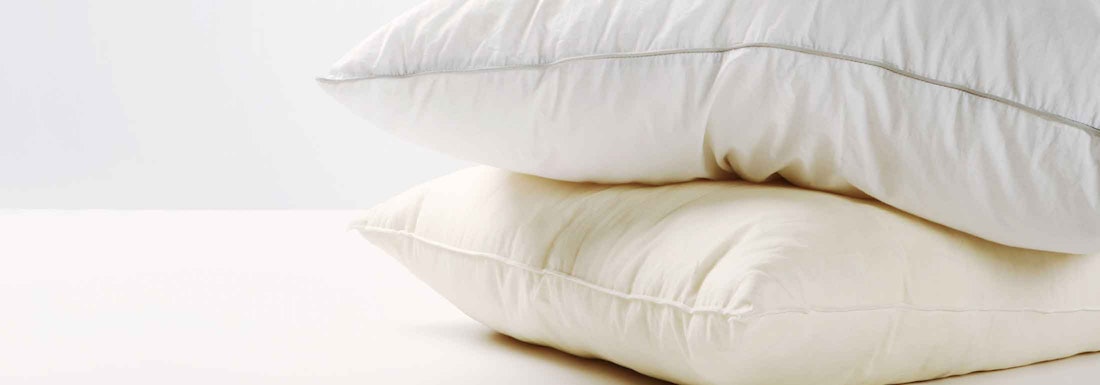
Why Do Pillows Turn Yellow? Tips on Washing
06 Jun 2023
With all pillows, it’s an inevitability that their once-pristine white exterior will eventually start to turn yellow. So, if you’ve found yellow stains on your pillows, there’s no need to go into a crisis over your hygiene; even those with the most rigorous attitude to cleanliness will face a yellowing pillow at some point. To understand why this is true, we must first look at what actually causes the mystery yellow stains that develop on our pillows.
Pillows turn yellow due to the accumulation of moist substances that originate from the user of the pillow. More specifically, the main substance that causes pillows to turn yellow is sweat; on top of this, saliva, skin and hair oils, and residue from skin and hair products will all further contribute to the yellowing of your pillows over time. To remove yellow stains from pillows, you’ll need to clean them in accordance with their care guidelines; this may involve either machine washing or spot-treating the pillows, ideally following a pre-treatment of bleach or commercial stain remover.
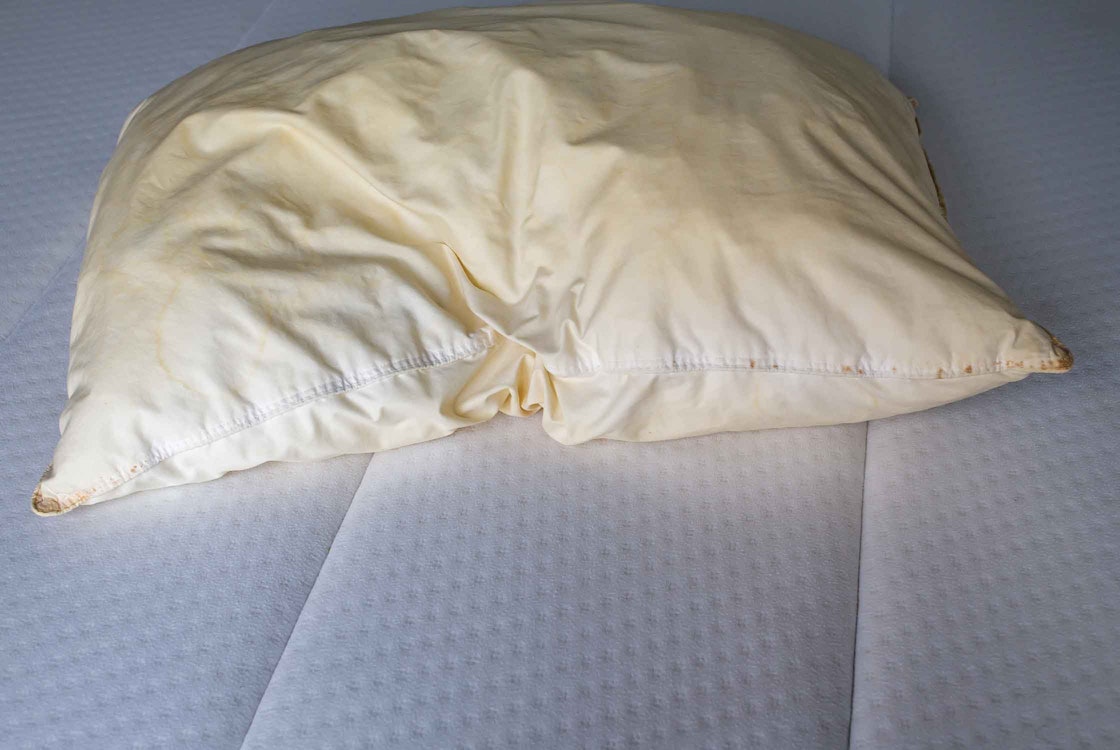
Why Do Pillows Turn Yellow?
Pillows turn yellow as they accumulate oils and other moist substances over time. The main culprit for yellow stains on pillows is sweat; other substances like body and hair oils, drool, and cosmetic products will further contribute to the gradual yellowing of your pillows.
Sweat
For the most part, sweat is the primary cause of yellow stains on pillows. The yellow tint of the staining is due to a chemical pigment that sweat naturally contains.
Regardless of your propensity for sweating during the day, it’s normal for everyone to sweat a least a bit during sleep. This is a natural way for our bodies to regulate temperature and prevent overheating while we’re in bed. As the sweat accumulates on your bedding, it can gradually cause your pillows to turn yellow; this is due to a pigment called lipofuscin that comes from the sweat glands and transfers to bedding via sweat.
As we’ve said, sweating during the night is an inevitable bodily function. Still, even though you can’t prevent it entirely, you can take some actions to minimise the impact of your sweat on your pillows. For example, methods to reduce sweating in bed include wearing lighter pyjamas and keeping your bedroom cool.
An even more effective approach to reducing night sweating is to improve the breathability of your bedding. You can do so by investing in pure cotton bedsheets, and ideally, investing in pillows and a duvet with a high-quality filling. We recommend opting for bedding that contains down or a synthetic down alternative as these fillings possess the best natural breathability.
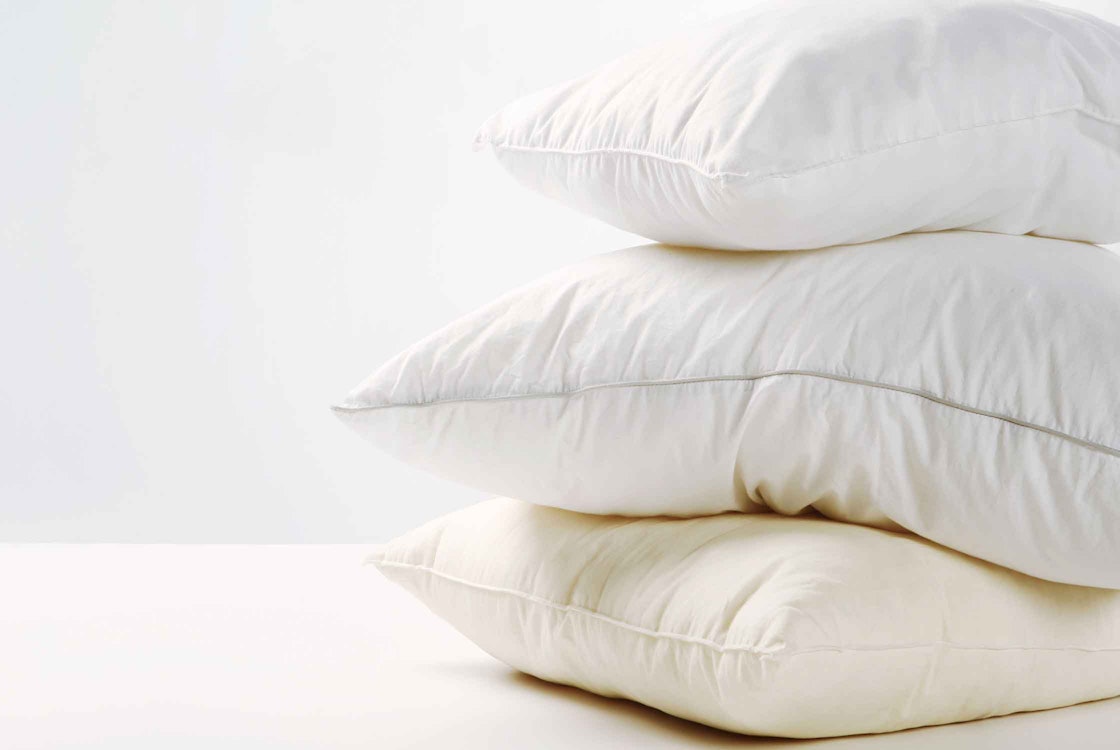
Oils from Skin and Hair
Other bodily substances, namely the oils from our skin and hair, are also common causes behind yellow pillows. Like sweat, these oils contain natural chemicals that can turn pillows yellow over time.
Another natural human characteristic, our bodies are covered in glands that excrete oils to keep our skin and hair healthy. More specifically, these glands are called sebaceous glands, and the oil they produce is called sebum. Sebum can transfer onto your bedding while you sleep, thus contributing to the yellowing of your pillows over time.
Again, the body’s natural production of oil is a cause of yellow staining for which total prevention isn’t possible. Even so, washing your face before bed and keeping on top of your hair-washing schedule will help to reduce the yellowing of your pillows from this source.
Wet Hair
Despite the aforementioned advice, freshly-washed hair can also be a source of yellow pillow stains. Your pillows may turn yellow from the absorption of moisture from damp or wet hair.
If you’re someone who prefers to shower at night, this is a likely cause of your yellowing pillows. You may be in the habit of going to sleep before your hair has fully dried; consequently, even if your hair is only slightly damp, the excess moisture will seep into your bedding. This has the same effect as sweat does in turning your pillows yellow.
For this problem, the most obvious solution is to change your routine by showering in the morning rather than at night. If you must shower at night, the next best tactic is to ensure that your hair is fully dry before getting into bed; either dry it off using a hair dryer, or alternatively, leave enough time between your shower and bedtime to allow your hair to air-dry.
Saliva
Saliva is another bodily substance that can cause yellow stains on pillows. It’s a very common sleep behaviour to drool while sleeping, which in turn can cause pillows to turn yellow over time.
There are a few specific health conditions that may cause you to drool in your sleep, like acid reflux, bruxism, and allergies. Otherwise, drooling may simply be an uncontrollable act for some while they’re sleeping. The excess moisture that the drooling creates can then result in the yellowing of the pillows.
If you’re aware that you’re drooling significantly in your sleep, you should investigate the potential causes for this issue; it may indicate an underlying condition like those we’ve listed above. As a general note, back sleepers are less likely to drool than side or stomach sleepers.
Cosmetic Products on Skin and Hair
Finally, any products you add to your skin or hair can contribute to yellow stains on pillows. These products contain oils and chemicals that have the potential to turn pillows yellow.
Cosmetic products are loaded with oils and other substances that make your hair and skin soft and shiny. Unfortunately, these substances are less beneficial for your pillows, as they’re common sources of stains. Moisturisers, lotions, creams, and hair products like conditioners and masques can all contribute to the yellowing of your pillows; this is particularly true if you apply such products right before getting into bed.
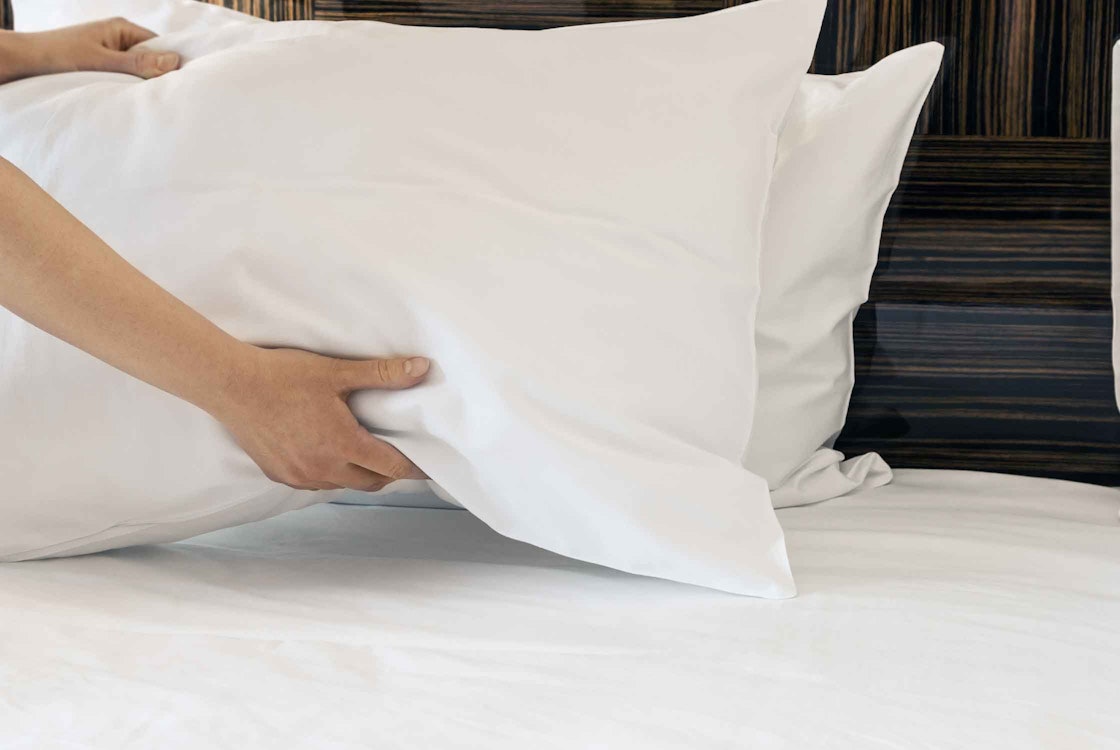
How to Wash Yellow Stains Out of Pillows
1. Take Note of the Manufacturer’s Care Instructions
Before taking any action, you should first refer to the care instructions provided by the manufacturer for your particular pillows.
Different pillows will come with varying care guidelines depending on their durability. For instance, some can withstand machine washing, whereas others are more delicate and require spot treatments or dry cleaning instead. This is why it’s crucial to first check the manufacturer’s care instructions for your pillows to avoid damaging them during the cleaning process.
2. Soak Yellow Stains in Bleach or Stain Remover
After reviewing the manufacturer’s care instructions, pre-treat the pillows with bleach or a commercial stain remover; skip this step if the care instructions recommend against such treatments.
Soaking the pillows in bleach or stain remover before washing them will give the best results in removing yellow stains. However, take care with such treatments, as they can be harsh on the pillow’s materials.
3. Machine Wash Pillows or Spot-Treat Stains
You can then choose the most appropriate cleaning method for your pillows, which again depends on the manufacturer’s care instructions.
If the care guidelines permit it, the most effective method to wash yellow stains out of pillows is by machine washing them. If your manufacturer recommends against machine washing, the next best alternative is usually to spot-treat the stains; this involves applying a small amount of water and cleaning detergent to the affected areas only.
